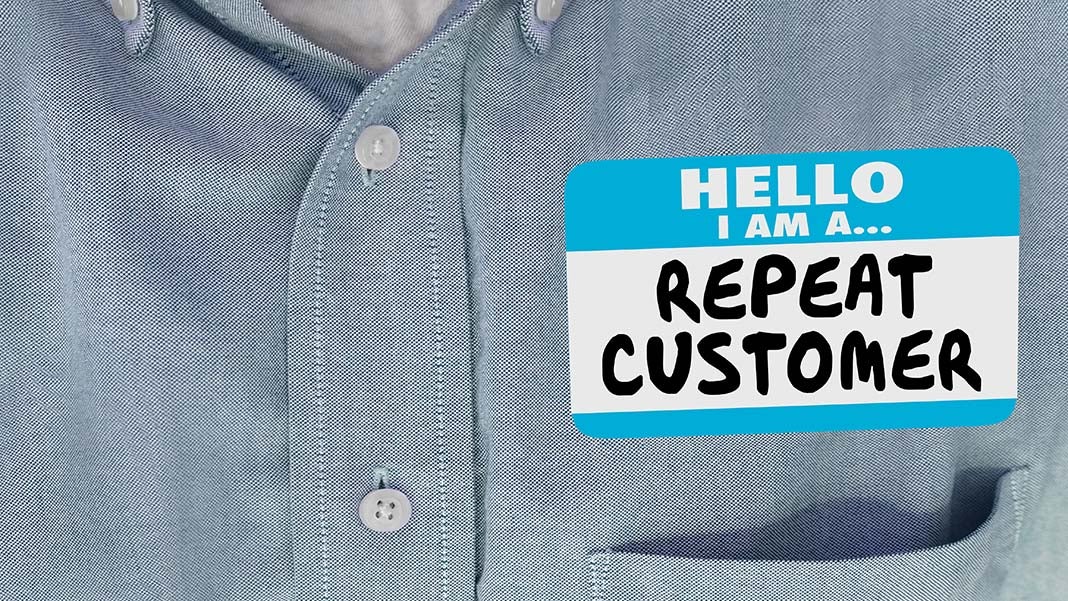
If you asked them, most small business owners would say that they’re focused on the “lifetime value” of their customers—but that’s probably because they think they’re supposed to.
Despite claiming to keep this metric top-of-mind, many owners don’t position their business to focus on how to keep their existing customers. According to Invesp, it costs five times as much to attract a new customer than to keep an existing one, but more companies choose to focus on acquisition than retention, and don’t even have a way to measure LTV properly.
It costs more to spend time and resources selling to a new customer than to an existing one. And while good businesses are always growing, they also recognize that appealing to loyal customers is more cost-effective than other tactics: According to Bain & Company research, a 5% increase in customer retention produces a 25% increase in profits.
Without the proper tools or practices in place, however, it can feel like you’re selling to new customers over and over again—with little insight into how to build your relationship with customers and keep them coming back for more.
Here are five ways that businesses can turn new customers into loyal ones:
Create a customer loyalty program worth everyone’s time
How do you create loyal customers? Start by telling them you want their loyalty. There’s no clearer way to do that than with a smart, robust loyalty program.
Good loyalty programs deserve their own discussion, but there are some basic rules: You’re never too small to have a loyalty program. You should use your program to identify your “VIPs” and cater to them as much as possible. And your loyalty program should be digital—no more punch cards.
Any business of any size can offer a loyalty program. Once you start selling your products or services, it’s never too early to start thinking about building up loyal customers. A loyalty program that rewards their repeat business, making buying from you again worth their time, is a good way to do that.
All loyal customers are important, but you’ll soon identify VIPs who you’ll want to invest in further. For example, in the restaurant business, the top 25% of customers drive 66% of all sales.
Stats like those drive companies like Starbucks to create elite membership programs, which encourage many visits in return for rewards, discounts, line jumps, and more.
Of course, all this customer loyalty is less useful to you if you can’t measure it. With measurable data, you’ll identify VIPs, track trends, and build buyer personas.
That’s why a digital loyalty program from a company like Belly or Thanx is so important—your program will collect data, unlike a punch card, which basically only tells customers how close they are to a free purchase.
Above all, your customer loyalty program should provide real value to customers—in the form of quality discounts or deals—and your business, in the form of data you can turn into action.
Devote extensive time and resources to customer service
As a small business, one of your best weapons against the titans of e-commerce and retail is your customer service. If you don’t have the team or training in place to successfully field and fix customer issues, you’ll quickly see those customers jump ship.
Providing great customer service is a three-step process, though the company’s brand and vision will dictate the specifics:
- Train new employees: When you bring on customer service representatives, recognize that the training process can take some time. You need to familiarize your reps with your business, instill in them courtesy and respect under pressure, be responsive to their issues or concerns, and give them time to flourish under your watch.
- Conduct ongoing group training: In many ways, training never ends in customer service (and in other fields)—it’s an ongoing process of learning and growing. Your customer service team should meet regularly to discuss best practices, common friction points, new messaging, instruction in new tools and apps, and just to check the pulse of the team and see what, if anything, bothers them about their role. Their issues can and will bleed into issues effectively responding to customers.
- Make guidelines they can refer back to: A customer service handbook that lives in the cloud—complete with scripts, company policies, the scope of their power and abilities, and return or refund policies—is a helpful tool that helps head off issues before they metastasize.
Use email to deliver personalized, valuable content
Email marketing is the surprise hero of the digital marketing world, thanks to a high return on investment value compared to other marketing tools like social media. If you’re able to collect a first-time customer’s contact information—their name and email, most importantly—then you’ll have your foot in the door to making them a loyal customer.
Use an email marketing platform to follow up with a new customer after their first purchase, offering personalized suggestions for future purchases that fit their buyer persona. You can and should also write them with offers to help them finish up an abandoned cart, notifications about items back in stock, and limited-time offers.
Your newsletter should also be as personalized as possible: Use split-testing to send content that will most likely resonate with each customer group, rather than one blanket newsletter that doesn’t build buzz for anyone.
Personalization is about sending relevant communications and content, but also about using little tricks of the trade: Addressing your recipients by name can induce them to click and read on. Take the time to collect good data on your customers, then use it.
Use social media to communicate, not just broadcast
All business owners know the importance of social media. Any small business worth knowing about has a Facebook, Instagram, Twitter, and LinkedIn, among other industry-specific channels, such as Pinterest for food and fashion.
Social media, however, isn’t just another medium for you to broadcast your marketing and advertising campaigns. The beauty of social media is that it creates dialogue between people, brands, celebrities, and leaders.
Use yours accordingly: Engage with users by commenting, reacting, and participating in platform-wide conversations. Field customer service complaints and forward them to relevant parties. Call for and share user-generated content to build relationships.
As a result, your social media pages will reflect your brand voice and create a community—both of which appeals to customers and gives them more of a connection to your business than they would have otherwise.
Clean up your presentation
Believe it or not, simple house cleaning can be the difference between a repeat purchase and abandonment of your business altogether.
If you have a brick-and-mortar store, remember that your business’s appearance is a major factor in whether customers think of it as a comfortable, safe, enjoyable place to spend their money.
Take your time each day to clean the store, wash the windows, ensure the lights are bright and warm, and even add small touches like inviting smells and music. The right scents and sounds can encourage people to linger, converse, and make purchases.
If you are an e-commerce business, there are still steps you can take to clean up your presentation. Make sure that your small business website is fast, mobile-responsive, and easy-to-navigate. The consistent use of your brand theme and colors across your site, social channels, and emails will help your business leave an impression on customers.
And be diligent about linking together every part of your digital footprint, from your site to your blog to your ecommerce store, so customers are always just a click away from making another purchase.
***
Gaining new customers always feels like it makes a bigger splash than convincing an existing customer to buy from you again. If you’re interested in improving the LTV of your customers, however, then you should be much more focused on creating loyal buyers than finding new ones. Start focusing on the right things and your business’s bottom line will reward you.
3126 Views












